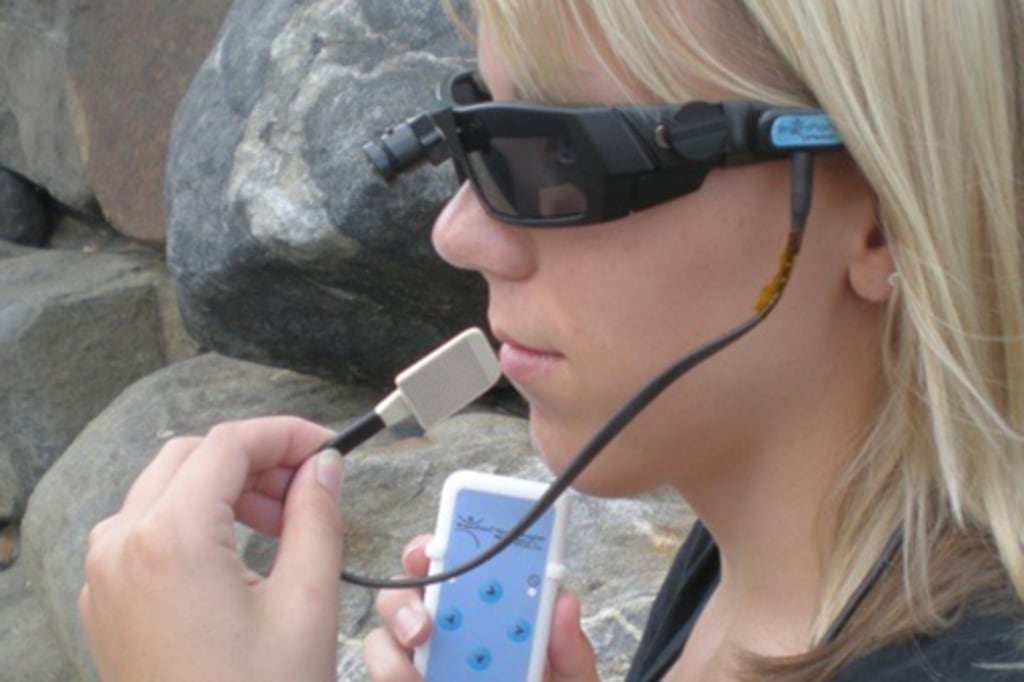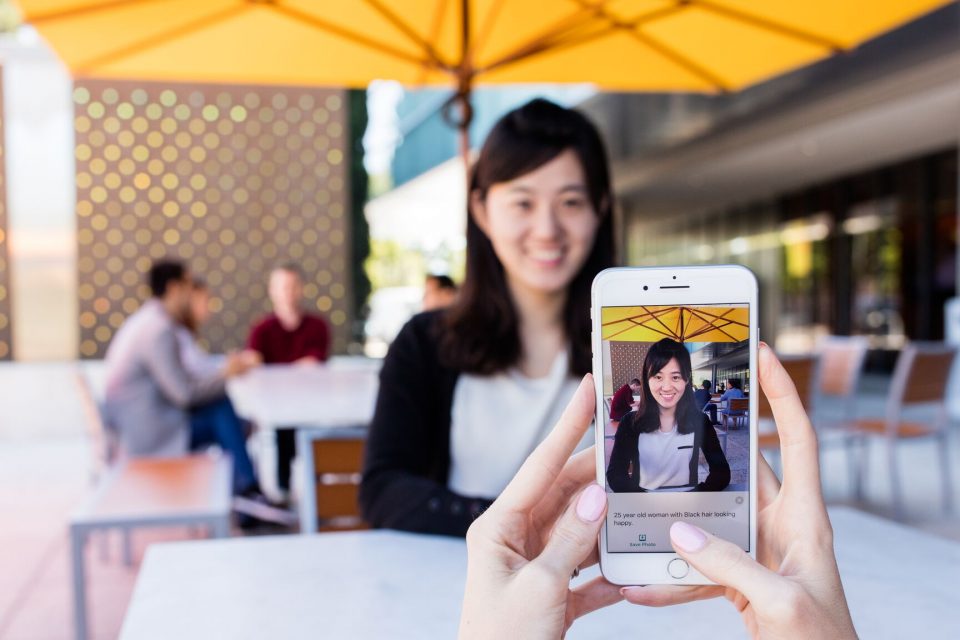Discover Ingenious Devices Made for the Visually Impaired
The growth of innovative devices for the aesthetically impaired stands for a considerable development in access and self-reliance. Technologies such as smart glasses with AI capabilities and mobile applications created to offer auditory summaries are reshaping daily experiences for customers. Additionally, wearable tools that utilize haptic feedback boost environmental understanding, while contemporary Braille developments provide new means to engage with text. As these devices remain to progress, their effect on the lives of those with aesthetic impairments raises vital questions regarding the future of inclusivity and autonomy in various elements of life. What exists ahead in this technical landscape?
Smart Glasses for Navigating

Smart glasses developed for navigating are reinventing the means visually damaged people communicate with their setting. These sophisticated tools make use of a mix of camera modern technology, fabricated knowledge, and acoustic feedback to give real-time details regarding environments. By utilizing challenge discovery systems, clever glasses can notify customers to possible hazards, allowing safer mobility in both unfamiliar and acquainted settings.
The assimilation of GPS modern technology further improves navigating abilities, enabling users to get acoustic directions as they relocate. This hands-free method not just fosters freedom however additionally encourages aesthetically impaired individuals to browse metropolitan landscapes with increased self-confidence. Additionally, several smart glasses are geared up with attributes that recognize spots and road indications, giving contextual details that boosts the customer experience.
Furthermore, the advancement of these devices is continuously advancing, with business functioning to boost the accuracy of item acknowledgment and increase the variety of navigational functions. As smart glasses come to be more affordable and easily accessible, they hold the possible to considerably change day-to-day live for visually impaired customers. Inevitably, these innovative devices represent an important step toward inclusivity, offering enhanced mobility and a higher feeling of autonomy for people navigating the globe around them.

Mobile Application for Daily Living
Just how can mobile applications enhance the every day lives of aesthetically impaired people? Mobile apps are reinventing the way visually impaired users browse their settings, manage day-to-day jobs, and accessibility details. These applications give essential assistance through numerous performances, cultivating freedom and improving lifestyle.
Several cutting-edge mobile applications are designed specifically for day-to-day living. For circumstances, applications like Be My Eyes link visually impaired customers with sighted volunteers using video clip telephone calls, allowing them to receive real-time aid with jobs such as reviewing labels or navigating strange rooms. Similarly, Seeing AI, created by Microsoft, utilizes artificial knowledge to explain surroundings, checked out message, and recognize objects, properly changing a mobile phone into an effective device for daily aid.
In addition, navigating applications customized for the visually impaired, such as Aira and BlindSquare, offer audio-based instructions and ecological information, making it possible for individuals to traverse their surroundings safely and with confidence. Beyond navigating and immediate support, mobile applications also support organization and task administration, with attributes that help users establish suggestions, create to-do lists, and track consultations. In summary, mobile applications work as essential resources, empowering aesthetically damaged individuals to lead more independent and satisfying lives.
Wearable Technologies for Assistance
Empowerment through technology is increasingly noticeable in the world of wearable devices made to assist visually damaged visit the site individuals. These ingenious devices integrate perfectly into day-to-day life, enhancing navigating and supplying crucial comments to individuals. Wise glasses furnished with cams can recognize faces and review message out loud, allowing individuals to interact even more with confidence in social and specialist settings.
One more notable development is using haptic responses systems in wearable gadgets. These systems use vibrations or various other tactile signals to convey info about the customer's environment, such as challenges or modifications in terrain, improving flexibility and security. Wearable modern technologies additionally consist of wristbands that connect to smartphones, alerting users to alerts through subtle vibrations, therefore boosting connectivity without reliance on aesthetic cues.
As these modern technologies proceed to advance, they are not just enhancing freedom for aesthetically impaired individuals however additionally cultivating a higher feeling of inclusion in culture. By connecting the space between challenges encountered in everyday living and the possibility for autonomy, wearable innovations offer as critical devices in the mission for equal rights and empowerment for those with aesthetic impairments.
Sound Description Devices
Audio summary tools play an important role in boosting access for aesthetically impaired individuals, offering them with the ability to engage with aesthetic media. Smart glasses for the visually impaired. These tools supply narrated summaries of vital visual components in films, television programs, and live efficiencies, guaranteeing that users can fully understand the context and emotions communicated via visuals
Sound description can be integrated into various systems, including streaming services, cinema testings, and live movie theater. Lots of popular streaming solutions currently include audio summary as an accessibility function, enabling customers to select it conveniently. In addition to mainstream media, specialized applications additionally exist, providing audio summaries for art events, galleries, and various other cultural occasions.
The efficiency of audio description hinges on the ability here of the narrators, that should convey visual details succinctly without detracting from the original sound. Developments in this field are additionally leading the way for even more customized experiences, where customers can change the level of detail and pacing according to their choices.
Braille Innovations and Devices
Braille devices and advancements have dramatically transformed the method aesthetically damaged people communicate with text and information. Modern improvements have actually led to the growth of functional devices that enhance proficiency and self-reliance among individuals.
Moreover, portable Braille notetakers incorporate traditional Braille input with contemporary capabilities, promoting note-taking, organizing, and paper modifying on the move. Wearable technology for low vision. These small tools commonly include text-to-speech capabilities, linking the gap in between Braille and acoustic info
Furthermore, ingenious Braille printers have arised, enabling individuals to produce Braille labels, records, and educational products effectively. This ease of access fosters greater involvement in academic More about the author and professional environments, inevitably advertising inclusivity.
Additionally, research right into wise Braille innovations continues to expand. Gadgets that incorporate expert system are being discovered to give real-time navigation aid and contextual information, boosting the individual experience in varied settings. In general, these technologies mirror a commitment to encouraging visually impaired individuals through innovation, guaranteeing they can easily accessibility and engage with the world around them.

Verdict
The improvement of cutting-edge devices for the visually damaged dramatically boosts self-reliance and high quality of life. Smart glasses, mobile applications, wearable technologies, audio summary tools, and Braille technologies jointly encourage individuals by offering vital navigation support, ecological understanding, and improved reading experiences. These modern technologies not just foster greater inclusion yet additionally promote freedom in everyday activities, ultimately adding to a more easily accessible and equitable culture for visually damaged people. Proceeded development in this area holds assurance for more improvements.
As smart glasses become a lot more easily accessible and cost effective, they hold the possible to considerably transform daily life for aesthetically damaged customers. Mobile apps are revolutionizing the method aesthetically damaged users browse their environments, take care of daily jobs, and accessibility details. Apps like Be My Eyes connect aesthetically impaired users with sighted volunteers via video telephone calls, allowing them to get real-time help with jobs such as checking out tags or navigating strange rooms.Additionally, navigation apps customized for the aesthetically damaged, such as Aira and BlindSquare, offer audio-based instructions and ecological details, enabling users to traverse their surroundings safely and with confidence.The advancement of innovative devices for the visually damaged dramatically boosts independence and high quality of life.